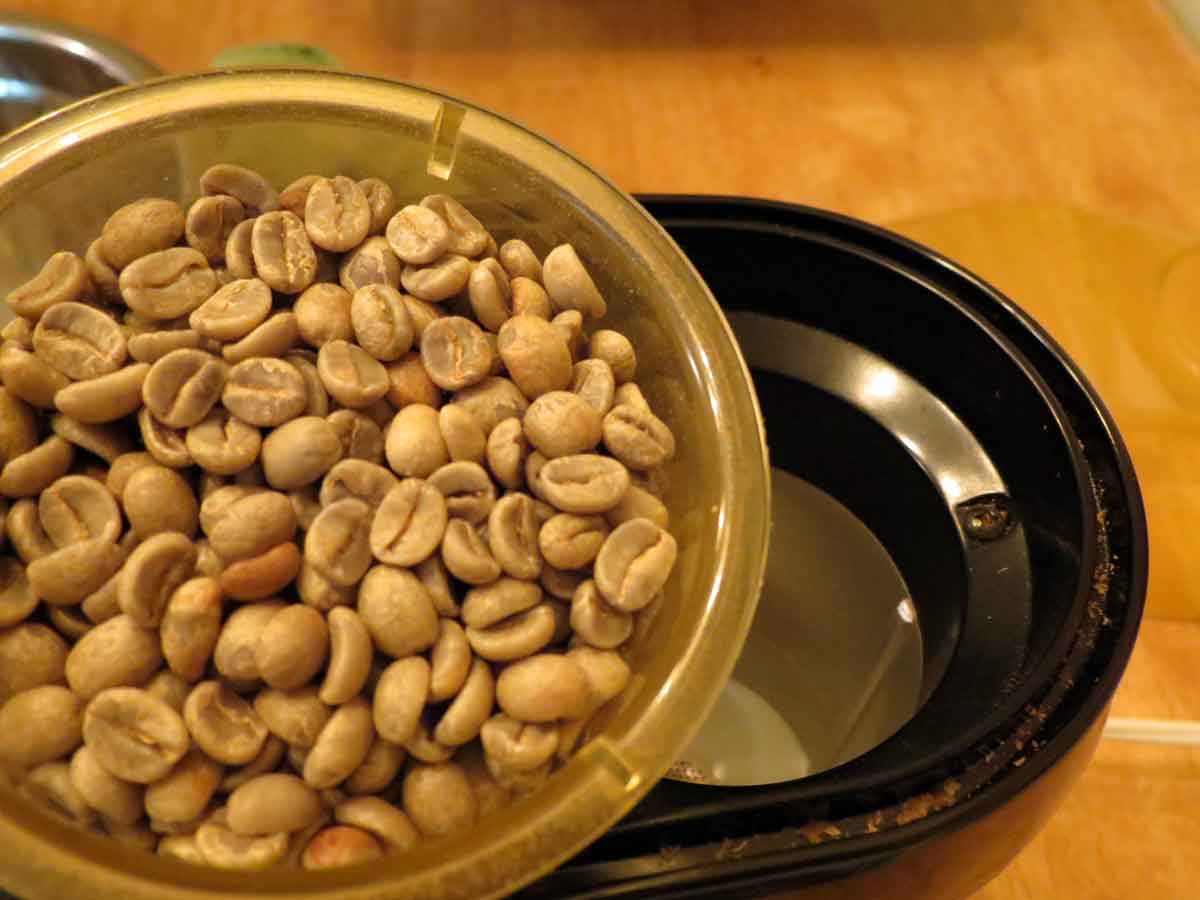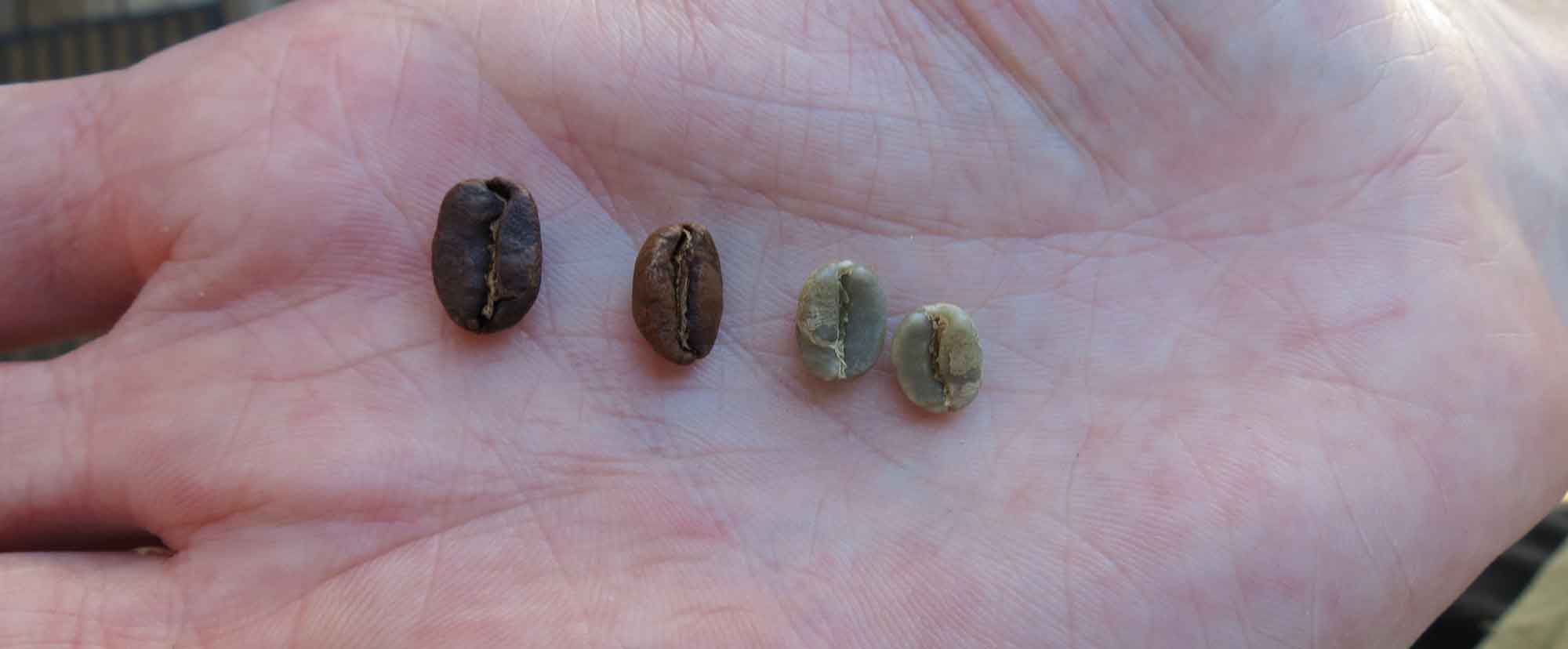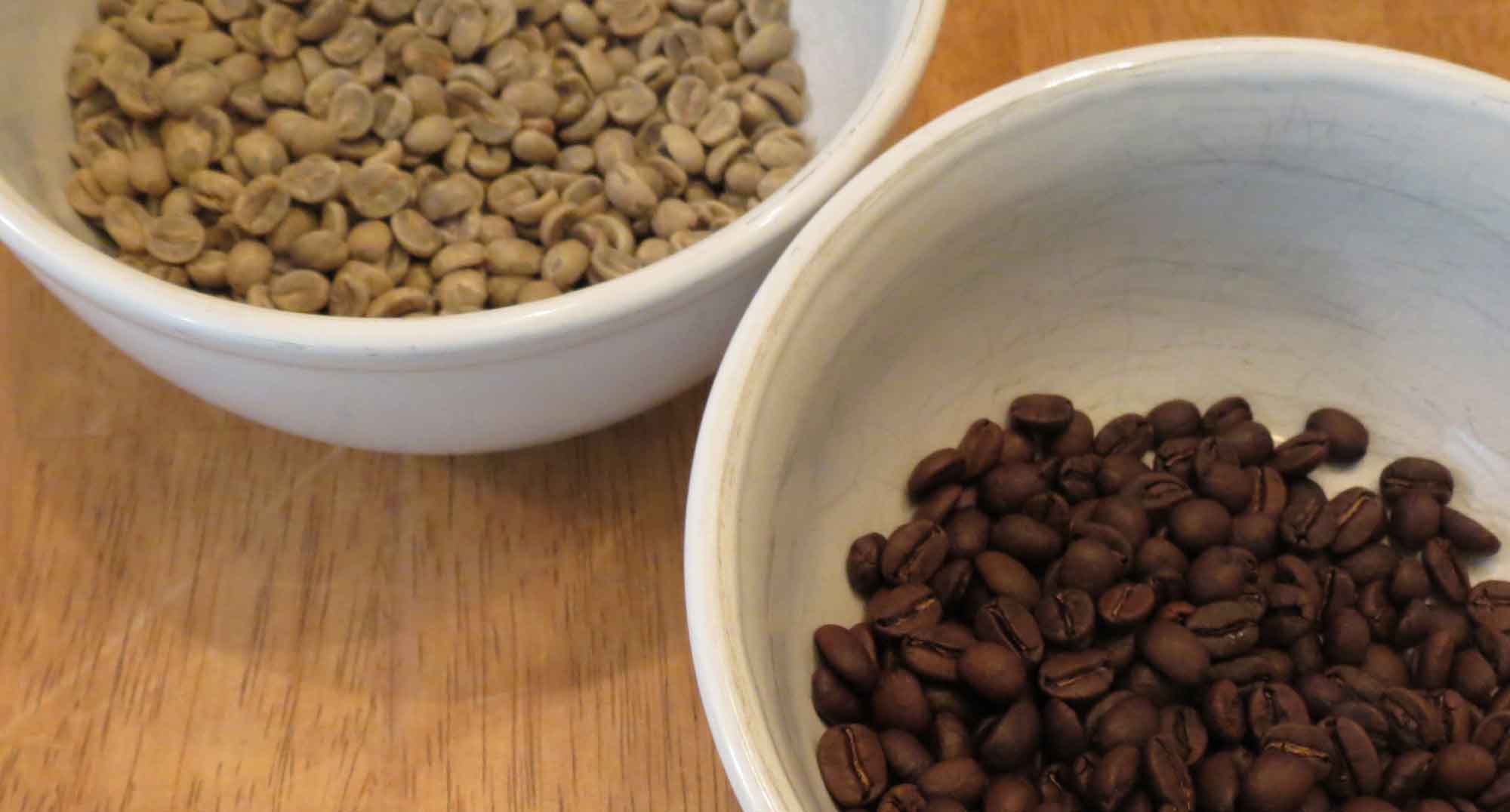I hemmed and hawed for long enough. It was only a matter of time before I tried to roast my own coffee.

Despite appearances, and how wacky it sounds, you can actually get a decent roast of coffee by using a $20 popcorn air popper. It should be noted, however, that the moment you drop a coffee bean into the popping chamber, you’ve probably voided your warranty. It also should be noted that the coffee beans get much hotter than popcorn kernels, so the risk of fire is greater. Tread at your own risk.
Why Would One Do This?
- Freshly roasted coffee in your house, of course.
- That is to say, you will not save money by roasting your own.
- Aside from the fresh coffee you’d get, you learn a lot. Roasting the same variety of coffee, from the same lot, at a few different roast levels allows you to taste the difference in a more direct way than simply drinking lots of coffees from here and there.
What is the Big Deal About Fresh Roasted Coffee?
Every coffee drinker I know eventually gives up on ground coffee, preferring to buy whole beans and grinding the coffee themselves. The difference between freshly-ground and ground-god-knows-when coffee is remarkable. Coffee goes stale, not as fast as bread, but it does go stale. That is why ground coffee is sold in those creepy vacuum-sealed bricks. It’s important to suck every possible molecule of air out in order to somehow stave off the staling.
Once you grind your own beans, you never go back. After crossing the freshly-ground hurdle, comes fresh-roasted. But roasting your own beans is harder than grinding, so most coffee-drinkers never bother.
Lots of equipment is available. Since I was just dipping my toe into the coffee-flavored waters, I decided to take the cheap inexpensive route.

The Process
What I wanted to do was find out if fresh-roasted coffee really was as good as I had heard, and what kinds of coffee I actually liked. I’m not really good at taking mental notes on such things. I’ve had coffees that I liked, and those I didn’t. I’ve never tasted “nutty overtones” or “hints of cream soda”. I’ve always simply thought, hmmm this is good, and moved on. I never established a clear understanding of what it is that I liked and didn’t like.
So, I ordered a sampler from Sweet Maria’s and received four pounds of coffee. A pound each from El Salvador, Ethiopia, Java and Columbia. I roasted a portion of each coffee at a few different levels.
This gave me a chance to drink coffee and better evaluate the varieties and tastes.
Roasting.
Roasting is pretty straight-forward. You put coffee beans in the chamber where your popcorn would normally go. You use the same amount of coffee as you would popcorn. You turn on the machine.
After a minute or so you will detect a coffee-ish roasting smell and notice that the beans are markedly browner. It will be around four minutes (depending on the air temperature and the variety of beans and your popper’s power) before you will hear a distinct cracking sound. As the beans continue to hop around the popper they’ll continue to pop (about 20 more seconds). This is “first crack”.
If you’re using an air popper, obviously you’ll have to listen carefully. The motor is loud and can obscure the sound.
Listen carefully and you may hear it in this video:
You need to reach first crack before the beans will be drinkable. This is as light as you’d want to go.
At this point, you’ll want to start paying close attention to the process. The beans are lightly roasted. You can stop the roast now and have a city roast. If you want a darker roast, continue roasting.
As the coffee gets darker, you’ll notice more smoke, as well as a new, nuttier smell.
Around a minute after first crack (again, depending on outside air temperature, the power of your popper, et cetera) you will be reaching “second crack”. During second crack, oils begin to be released and the beans take on a shiny appearance.
Somewhere shortly after second crack you reach the level commonly referred to as French Roast.
Second crack sounds like this:
I personally think second crack is too far to take roasting. But those who take cream or milk with their coffee seem to like darker roasts better. I would recommend experimenting.
It should also be noted that using an air popper is not the only way to roast coffee at home. Sweet Maria’s has a lot of tips and recommendations on how to get started.
One note if you do try to do this: It’s messy. It’s smoky. Unroasted coffee beans have a thin, paper-like skin. As they roast, the beans get larger and shed the skin. This chaff will blow all over your kitchen. Pick a sunny day and do this outside. Or at least wait until your significant other is out of the house and quickly clean up afterward.
Chaff Blowing Out of the Popper:
I’ve long hated dark roasts and I have considered myself a medium roast sorta-guy. I was wrong. More and more I found myself liking the lighter roasts.

But the best thing, by far, about roasting coffee yourself is watching it happen. You get a better understanding of what you are drinking. It gives you a chance to experiment with different varieties and different roasts in a controlled way. And this, in turn, gives you a better appreciation for what you are drinking.
All it takes is a little bit of time and a cheap-o air popper. If you drink coffee, you should try this.